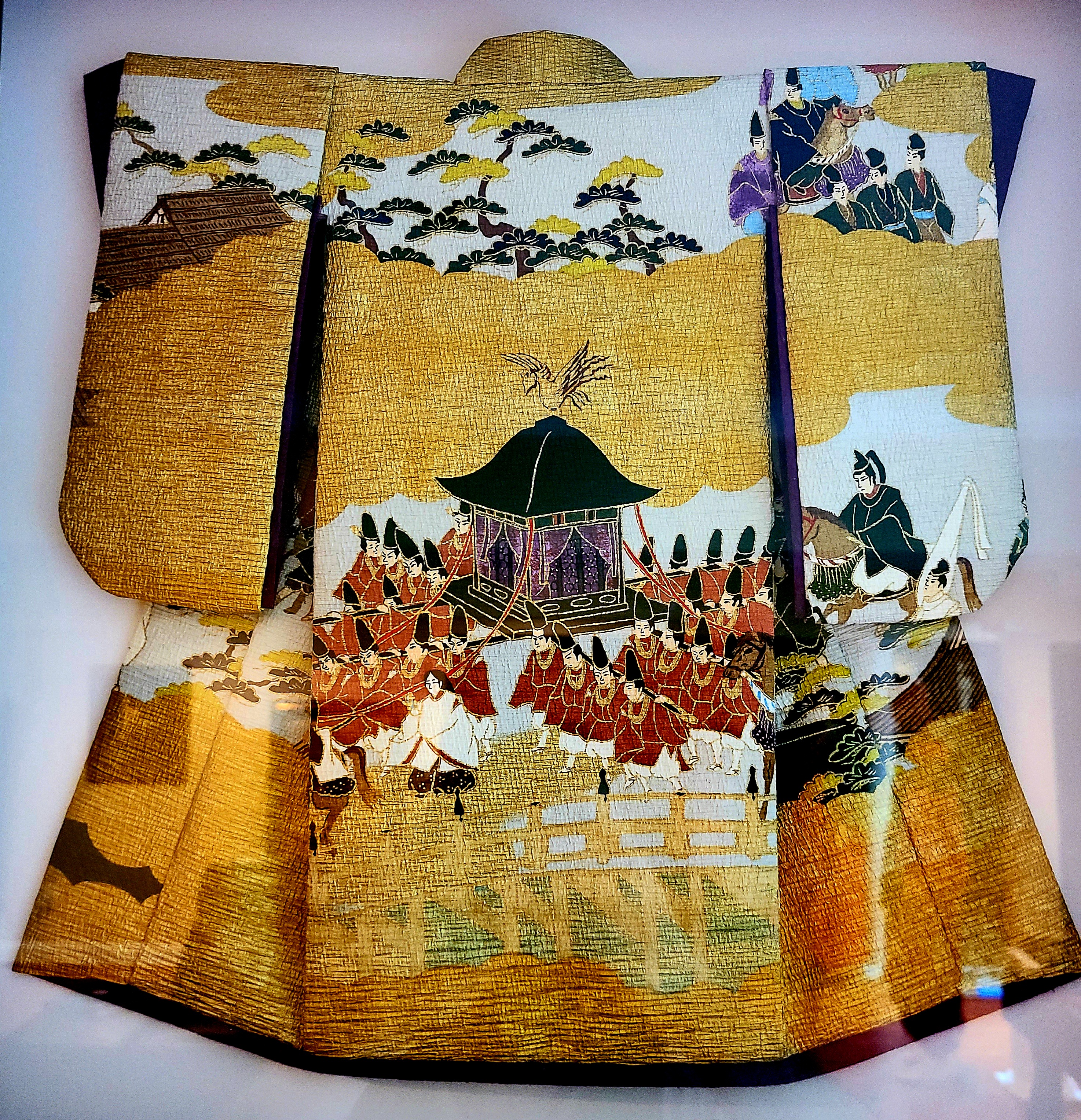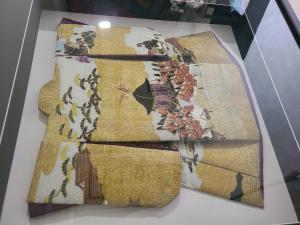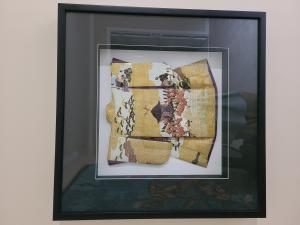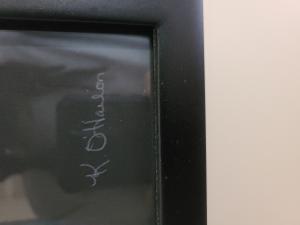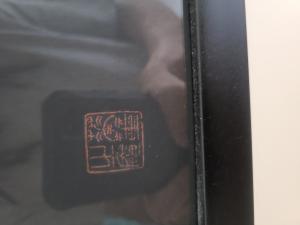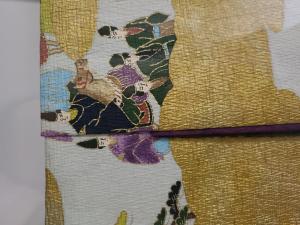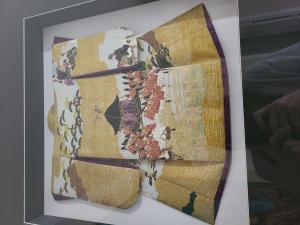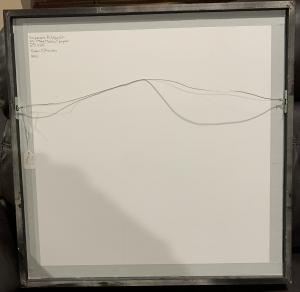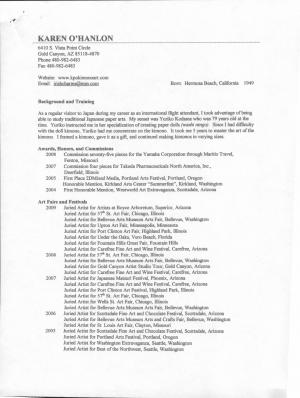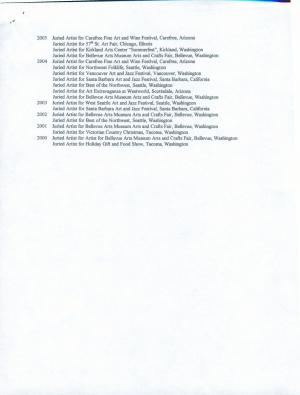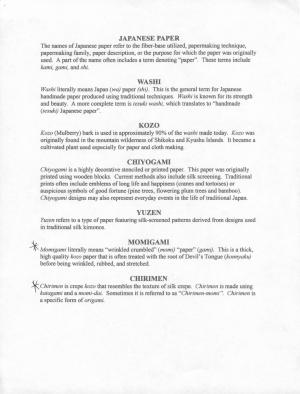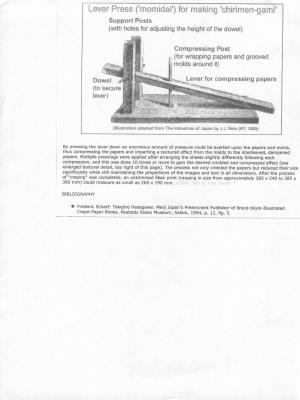Emperor’s Palanquin
Karen O'Hanlon
Kimono
A gold-patterned paper kimono with royal purple lining. The design features popular motifs from the Edo period (1600-1869). The scene depicted showcases a Japanese emperor traveling in a palanquin while escorted by his guard and followed by members/ministers of the court.
Favored by Japanese girls since the early 1500s, the art of washi ningyo (Japanese Paper Dolls) originated from anesama ningyo, which are flat paper dolls. The paper kimonos are designed by the students and teachers and inspired by Japanese traditions and cultures. Some of these influences include ukiyo-e (woodblock prints), and the theater arts in Noh, Kabuki, and Bunraku.
Height: 25.01875
Width: 25.01875
Depth: 3.01875
inches
Scottsdale, Arizona
Gold Canyon, Arizona
These dolls were made with special Japanese paper and cotton. It can take up two to three hours to make a simple piece for these intricate dolls. Though their appearance closely resembles fabric, these kimonos are made from beautifully patterned paper created by Japanese master craft artisans. Paper kimonos are commonly made with washi papers such as Yuzen or Kozo. Washi papers are handmade from the inner bark of Mulberry, Mitsumata, and Gampi trees. O’Hanlon uses two types of Kozo paper: Chiyogami and Yuzen. Chiyogami paper is brightly colored with woodblock-printed patterns. Yuzen paper’s patterns are based on traditional silkscreen designs, closely imitating the silks of Japanese kimonos. See attached documents for more detailed information.
Paper kimonos are made following the same process of an authentic cloth kimono. To create the paper kimonos, the artist first creates various sized templates for each pattern piece of the kimono. Each kimono consists of layering eleven templates of patterned paper. The artist has to cut, fold, glue, and layer the pattern paper precisely. Working with fragile paper requires delicate handling. For lining the kimono, the same steps are repeated.
(American, 1949-Present)
Karen O'Hanlon designs Chiyogami and Washi (Japanese Paper) Kimonos imitating the same detailed fashion of full-sized traditional robes. Each of her works is unique. Her kimonos have the appearance of fabric but are actually made out of paper. The high-quality papers she uses are made by Japanese master craft artisans using traditional as well as modern tools and techniques. As a regular visitor to Japan, she studied traditional Japanese arts with Yuriko Kodama. Under Kodama-sensei, O’Hanlon specialized in washi ningyo (paper dolls) focusing on the kimonos. After five years, O’Hanlon mastered the creation of paper kimonos. O’Hanlon’s kimonos are part of various private collections and corporate collections such as Takeda Pharmaceuticals North America, Inc., and Maritz for Yamaha Corporation.
